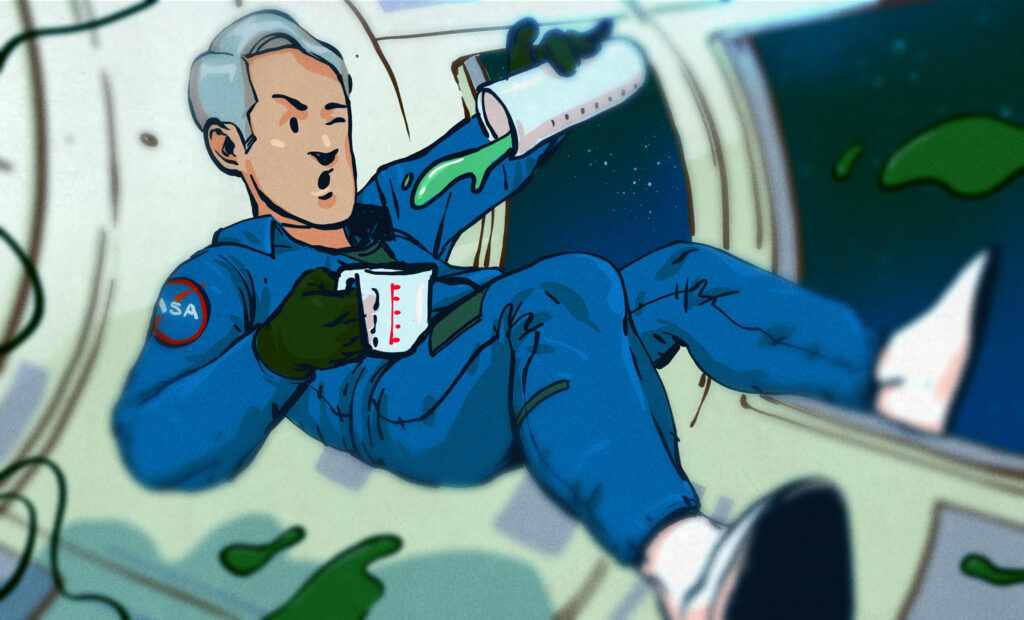
A new project dubbed “pISSStream” is harnessing NASA’s public telemetry data from the International Space Station (ISS) to provide real-time updates on the station’s urine tank levels. Unveiled in May, this initiative not only adds a touch of humor to space engineering but also opens a window into the sophisticated methods used to measure liquid levels in a microgravity environment.
Understanding how liquid levels are gauged in space presents unique challenges. Unlike on Earth, where gravity dictates that fluids settle to the bottom of a container, the absence of gravity in space complicates traditional measurement techniques. Instead, engineers must rely on principles of surface tension and capillary action to determine fluid behavior.
The Science Behind Liquid Measurement in Space
In microgravity, fluids do not naturally settle into a defined level, creating intricate engineering challenges. On the ISS, astronauts have been observed manipulating floating water droplets, demonstrating how surface tension keeps the liquid in a spherical form. This phenomenon also occurs within spacecraft tanks, influencing how propellants behave during flight.
Historically, NASA has utilized various methods to monitor liquid levels in their rockets. During the Apollo missions, cameras were installed in fuel tanks to observe the fluid dynamics during launch. The footage revealed how the remaining fuel would form blobs that floated within the tanks once in free fall. Currently, SpaceX employs similar techniques to ensure their rockets remain operational in space.
For rockets, propellant management is critical. While non-reusable stages do not require meticulous fuel monitoring post-burn, reusable rockets must ensure their fuel is settled correctly before engine restart. This is often achieved using ullage motors, which create slight accelerations to help position the fuel at the tank outlets.
Tracking Fuel and Waste in Space
The measurement of liquid levels, particularly for crucial substances like propellants, is a matter of life and death during crewed flights. The Apollo missions utilized a system known as the Propellant Utilization Gauging Subsystem (PUGS), which relied on capacitive probes to measure fluid levels accurately. These sensors operated by measuring capacitance changes within the tanks, providing vital data necessary for safe operations.
For the ISS, an innovative system has been adapted to monitor the urine tank levels. Instead of traditional sensors measuring fluid height, engineers employ a method analogous to flow accounting. Each time a Waste & Hygiene Compartment (WHC) is used, approximately 350 ml to 450 ml of fluid enters the urine tank. By tracking the number of flushes and measuring outflow to the Urine Processing Assembly (UPA), the current level can be estimated.
In contrast to crewed missions, satellites and deep-space probes cannot afford to waste precious propellant on ullage burns. Instead, engineers have developed alternative methods for gauging liquid levels without compromising efficiency. Techniques such as pressure-volume-temperature (PVT) measurements and thermal gauging allow for estimations of remaining fluid based on internal conditions of the tank.
Recent advances include electrical capacitance volume sensing (ECVS) and electrical capacitance volume tomography (ECVT). These methods utilize arrays of electrodes within the tank to create a detailed map of fluid distribution, enabling engineers to assess the volume of liquid accurately, even when it exists in discrete blobs.
Another promising technology, radio frequency mass gauging (RFMG), was tested aboard the ISS and is set for deployment in future lunar missions. This method uses radio frequency signals to analyze liquid levels, providing critical data about cryogenic fuel conditions. Notably, RFMG was instrumental in confirming that the cryogenic fuel levels in the Intuitive Machines’ lunar lander were accurate, despite unexpected temperature readings.
In conclusion, the innovative project “pISSStream” not only adds a playful element to space exploration but also underscores the complex engineering behind liquid measurement in microgravity. As space missions evolve, understanding how to efficiently monitor and manage fluids will remain a vital aspect of ensuring success in future endeavors.







